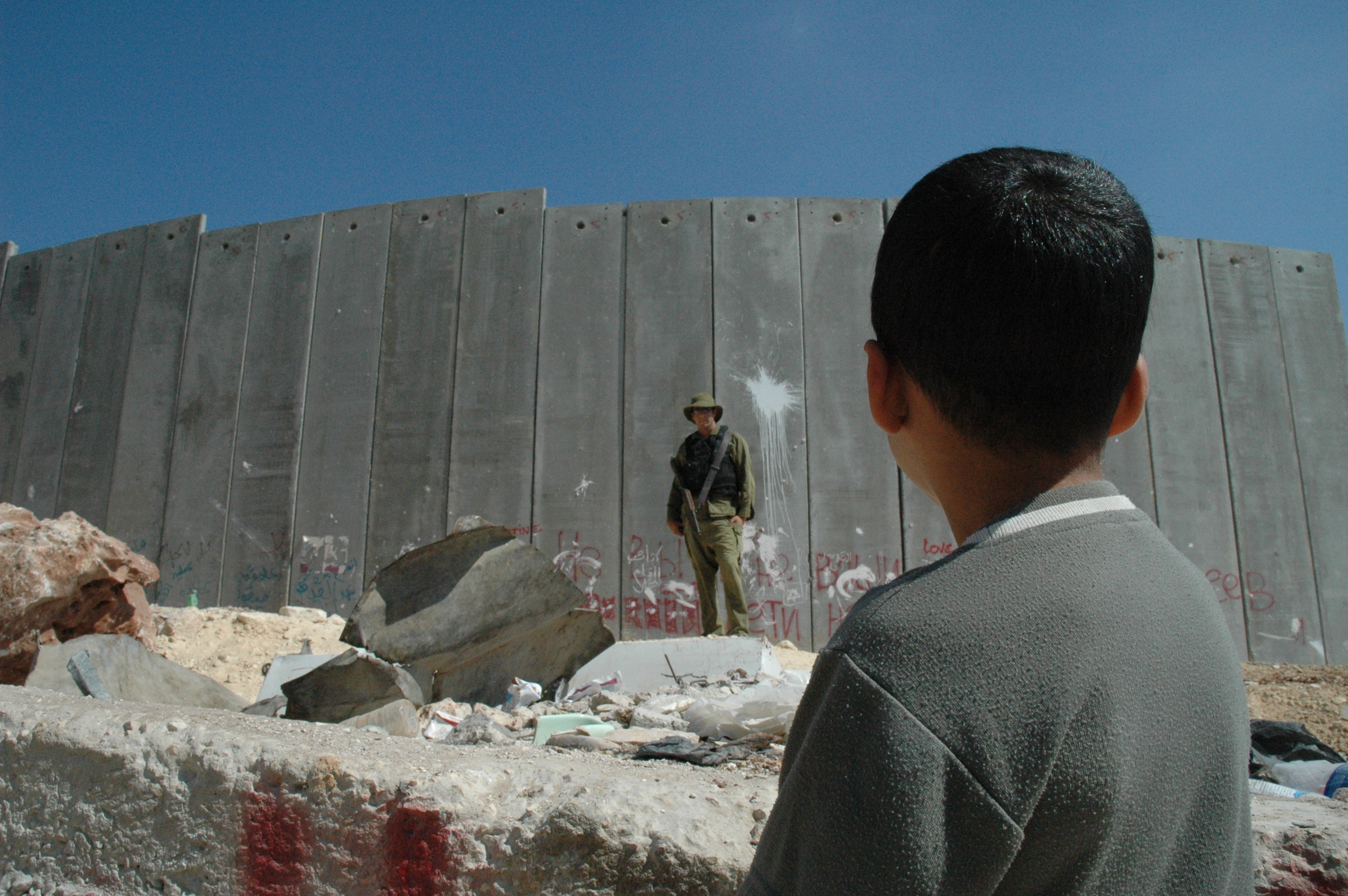Related Links
Conflict from 1948 through 2000 IsraelPalestineGlossary of TermsConflict Timeline
During Passover in 2002, an explosion at a hotel in Nethanya killed 27 people. In retaliation, Israel launched operation Defensive Shield in an effort to stamp out terror. The operation included reoccupying such towns as Ramallah, Nablus, and Jenin. During the operation, Israel found evidence that Arafat had approved the organization of terror cells and that the PNA treasury department funded explosive belts used by suicide bombers. Israel Defense Forces (IDF) destroyed banks, roads and other organizations that had no involvement with terror. While preparing to invade Iraq, the U.S. pushed the Palestinians to reform their government, eliminate support for terror groups and corruption. The Bush administration introduced the idea of a roadmap that would end the violence and lead to a peace agreement. The U.S. formed a group with the European Union, the United Nations, and Russia, known as The Quartet. Using the roadmap, The Quartet tried to shape international policy toward an Israeli-Palestinian conflict resolution. They suggested Mahmud Abbas for Prime Minister of Palestine over Yasser Arafat, even though Arafat was still very popular in Palestine.
The Security Barrier
U.S., British and Australian armed forces invaded Iraq on March 20, 2003. The war created further chaos in the Middle East. Like much of the Arab world, Palestine resented the U.S. occupation of Iraq. The Palestinians had supported Saddam Hussein. His regime provided money for families of suicide bombers and sheltered Palestinian militants. Iraq quickly fell and, on April 29, Mahmud Abbas was elected Prime Minister; however, his election did not end the violence. Yasser Arafat made himself in charge of a new security force, which violated the conditions of the roadmap. Suicide bombings, terrorist attacks, and retaliation continued throughout 2003. In response to the ongoing violence in 2003, the Israel Labor party pressed for a security barrier along the 1948 armistice Green line to prevent suicide attacks. This proposal was based on the Gaza barrier. Due to the barrier, infiltration from Gaza had been reduced to zero. At first, Prime Minister Sharon opposed the barrier because it divided Jerusalem and left Israeli settlements in the West Bank unprotected. Sharon and his Likud party won a landslide election and he adapted the Labor party’s barrier idea, changing the route to include Israeli settlements. Sharon’s route cut off Palestinians from farms, fields, and other places of work, causing both Palestinian and Israeli peace groups to protest. On February 8, 2005, both sides met at a summit conference hosted by Egypt in Sharm El Sheikh. Both sides announced an end to the violence. Israel agreed to release 900 Palestinian prisoners and to gradually withdraw from Palestinian cities. Jordan’s King Abdullah and Egyptian President Mubarak, both in attendance, pledged to return ambassadors to Israel. The Intifada was officially over; however, following the same trend of previous conferences, later that month, there was a suicide bombing in Tel Aviv by an Islamic Jihad group based in Damascus. Abbas condemned the bombing, and the PNA made arrests, but Israel froze its plans to withdraw from Palestinian cities.
Disengagement and Rise of Hamas
In September 2005, Prime Minister Sharon withdrew all Israeli settlers from Gaza. However, Israel kept control of the border crossings and continued periodic raids. On January 4, 2006, Prime Minister Sharon suffered a stroke, leaving Israel leadership in the hands of Ehud Olmert and the new, centrist Kadima party. Olmert confronted the issue of settler lawlessness, condemned the cutting down of olive trees, and called for the evacuation of illegal outposts, but after a confrontation between the IDF and settlers, his government backed down. Also in January 2006, Palestine held parliamentary elections. In a surprise victory, Hamas ousted the Fatah government, but not Mahmoud Abbas was still president. The two factions briefly formed a national unity government, but, in June 2007, Hamas seized control of Gaza, routing Fatah forces and killing more than 100 people. Israel responded to Hamas’ seize of Gaza by maintaining even tighter control on the goods and people coming in and out of the territories.
Hezbollah attack
On July 12 2006, Hezbollah militants crossed the border from Lebanon into Israel and attacked an Israeli army patrol, killing three soldiers and kidnapping two others. The attack coincided with a series of mortar and rocket attacks on northern Israel by Hezbollah. The attacks provoked a month long war in which 1,200 Lebanese and 128 Israelis were killed. Both sides stopped fighting on August 14, 2006. The UN and international human rights groups condemned Israel for using cluster bombs in Southern Lebanon. The war caused criticism within Israel and more resentment in the Arab world.
Israeli-Palestinian Conflict Main Page
Sources: Associated Press, New York Times, mideastweb.org, The Economist, and BBC.
